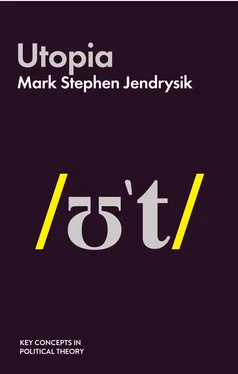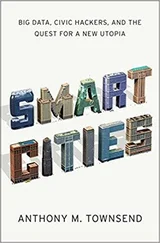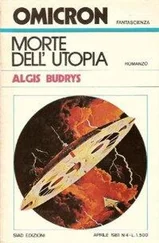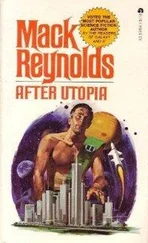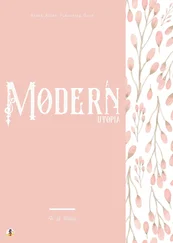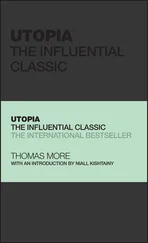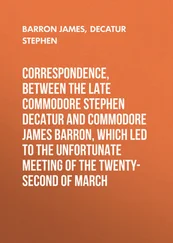Utopia is a humanistic enterprise. It is based in the belief that society can be understood by human beings and changed for the better. Any utopian theory worth discussing must recognize the value of our fellow beings and our moral relation to them. Recognizing a common good extending beyond the self, the family, or a particular religious or ethnic community remains the greatest and most utopian aspiration of all.
Defining Utopia/Utopianism
“Utopia” is a contested term for which “no fixed definition as such is attainable” (Claeys and Sargent 2017: 2). But in order make the systematic study of utopia and utopian thought possible, the term must be defined in a manageable way, keeping in mind there are exceptions to any rule. The idea of utopia is highly plastic and can be made to fit almost any political, economic or social system. It extends in all directions and can encompass any human endeavor. As Ernst Bloch said in his classic work on utopian theory The Principle of Hope , “so far does utopia extend, so vigorously does the raw material spread to all human activities, so essentially must every anthropology and science of the world contain it” (1986: 624). The danger here should be obvious: we can make utopia mean almost anything and attach utopian ideas to almost any human action. We must beware of a utopianism that is “watered down to the point that it can be found everywhere and nowhere” (Ingram 2016: xx). In that light, it is absolutely necessary to provide a rigorous definition of the concept to avoid confusion. However, creating an overly narrow definition risks removing much of the richness inherent in the study of utopia.
Utopianism might be described as a continuum. On one side, we see efforts at reform, exemplified by the “realistic utopia” advocated by the great philosopher of liberalism John Rawls (2001). At the other extreme, we find bold visions of the complete overhaul of society, first seen in Plato’s (possibly) perfect community delineated in Republic . Gregory Claeys says utopia “generally represents … a guided improvement in human behavior towards a substantially better condition, usually where society is considerably more equal and people are much better behaved” (2017: 265). The idea of a better, more just world seems to be a natural human aspiration. Utopianism is the desire to attain that better world here and soon, not in some distant future or after-death state.
In all its many forms, utopia critiques the existing order and, in doing so, “contributes to the open space of opposition” (Moylan 2014: 1). Utopia can be ambiguous, questioning its own very possibility. Utopian writers can demonstrate the dangerous potentials of utopia in dystopian works. Utopian ideas contribute to feminism and queer theory. Utopia may be found in small spaces outside of social norms, as in the heterotopia described by Michel Foucault.
Lyman Tower Sargent defines a utopia as:
A non-existent society described in considerable detail and normally located in time and space. In standard usage utopia is used both as defined here as an equivalent for eutopia or a non-existent society described in considerable detail and normally located in time and space that the author intended a contemporaneous reader to view as considerably better than the society in which that reader lived. (2010: 6)
Ruth Levitas provides a definition that helps explain the place of utopia in political thought:
The core of utopia is the desire for being otherwise, individually and collectively, subjectively and objectively. Its expressions explore and bring to debate the potential contents and contexts of human flourishing. It is thus better understood as a method than a goal – a method elaborated … as the Imaginary Reconstruction of Society. (2013: xi)
Utopia provides a platform to criticize our times and to work toward something better. Any utopian work or theory provides an alternative to present social, economic and political organization. The “Imaginary Reconstruction of Society” must be followed by efforts to really reconstruct society. It is not enough to criticize; we must also provide answers to our seemingly insurmountable problems. But simply reading More’s second book of Utopia , where he gives the reader a report on the close to perfect society of the Utopians, without reading the first book, where he delineates the injustice and imperfection of England in his own times, misses the point. The mixed critique at the heart of utopia remains its critical feature, even when, in the present, dystopian speculations seem to have replaced utopia. Utopian dreams still insinuate themselves into our current dystopias. As Lucy Sargisson has noted, contemporary works mix “eutopian and dystopian possibilities for the human race” (2012: 12).
Krishan Kumar suggests that four primary elements constitute utopia. First, he says that utopia contains the “element of desire,” which he describes as an “escape from toil and suffering.” Second, utopia means “harmony.” In utopia, “everyone is at peace with himself and with other men.” Third, all utopias provide “hope.” Utopia is the “promise of a new dispensation” where “justice and freedom reign.” Finally, utopia is organized by self-conscious “design.” Kumar says that these four elements combine to give us “a map of quite different possibilities for speculating on the human condition” (1991: 18–19).
Kumar and Sargent, among others, link these elements to several enduring features of utopian dreaming. All societies seem to have Golden Age stories, tales of a time when people lived in harmony with one another, with the gods (or God) and with nature. But these stories inevitably delineate the beginning of the current age of oppression and violence. The Garden of Eden is the most obvious such example, but similar stories can be found in the myths of the Greeks, Romans, Hindus and Chinese. During the so-called Age of Discovery, European explorers sought an earthly paradise in the “new world.” Others in this period searched in Africa and Asia for the legendary kingdom of Prester John, a mighty Christian monarch who ruled a just state and would join with the kings of Europe to drive back the threat of Islam. Other traditions look to the lost immortal and enlightened realm of Shangri-La, the perfection of Atlantis, or the simple pastoral life of Arcadia. But not all utopians have such high aspirations. Some dreamed of a fleshly paradise or a “body utopia,” often called Cockaygne, where food fell from the trees and work was banned. In such utopias, often identified with the dreams of the poor in medieval Europe, harmless license, gluttony and sexual freedom abounded. Finally, utopian dreaming can be seen in the longing for the end, the advent of the millennium. In the Christian tradition this has come to mean a time when true justice will be established. The dream of an end to the mundane world and the revelation of new and liberating truths crosses cultural boundaries. This desire has produced groups who withdraw from the world, such as the Essenes of the first century CE and today’s religiously inspired intentional communities. It can be seen in the many forms of monasticism found around the world. But this dream has also produced nightmares in the form of groups such as the Fifth Monarchists of the sixteenth-century English Revolution, who believed the reign of Christ could be brought forward by violence. It has produced apocalyptic cults such as the followers of Jim Jones, who were driven to mass suicide at Jonestown, Guyana, in 1978.
Zygmunt Bauman points to nostalgia as a key feature of contemporary utopia. He says that “‘retrotopias’ are currently emerging: visions located in the lost/stolen/abandoned but undead past” (2017: 5). Such retrotopian ideas can be seen in political discourses that praise the “good old days” or the “greatest generation” and call for the restoration of traditional values (whatever they might be). The rise of ISIS, European neo-fascists, the American alt-right, or even Donald Trump’s promise to “make America great again” all show the power and danger of retrotopian ideas.
Читать дальше
